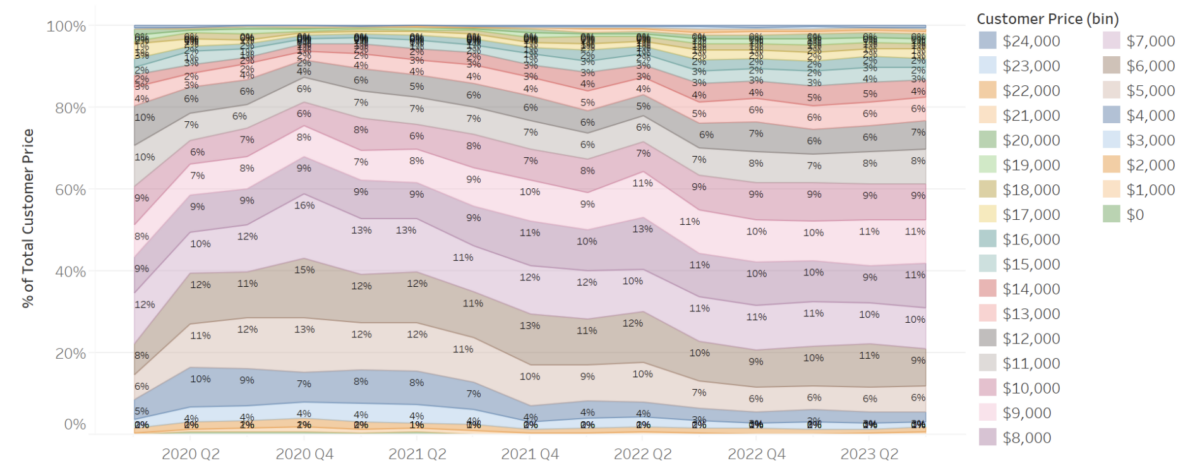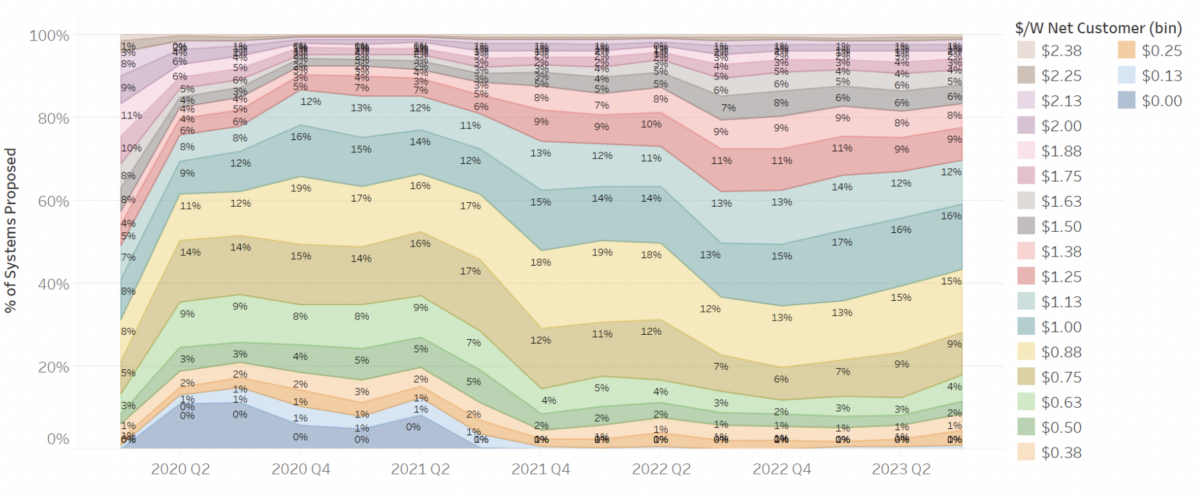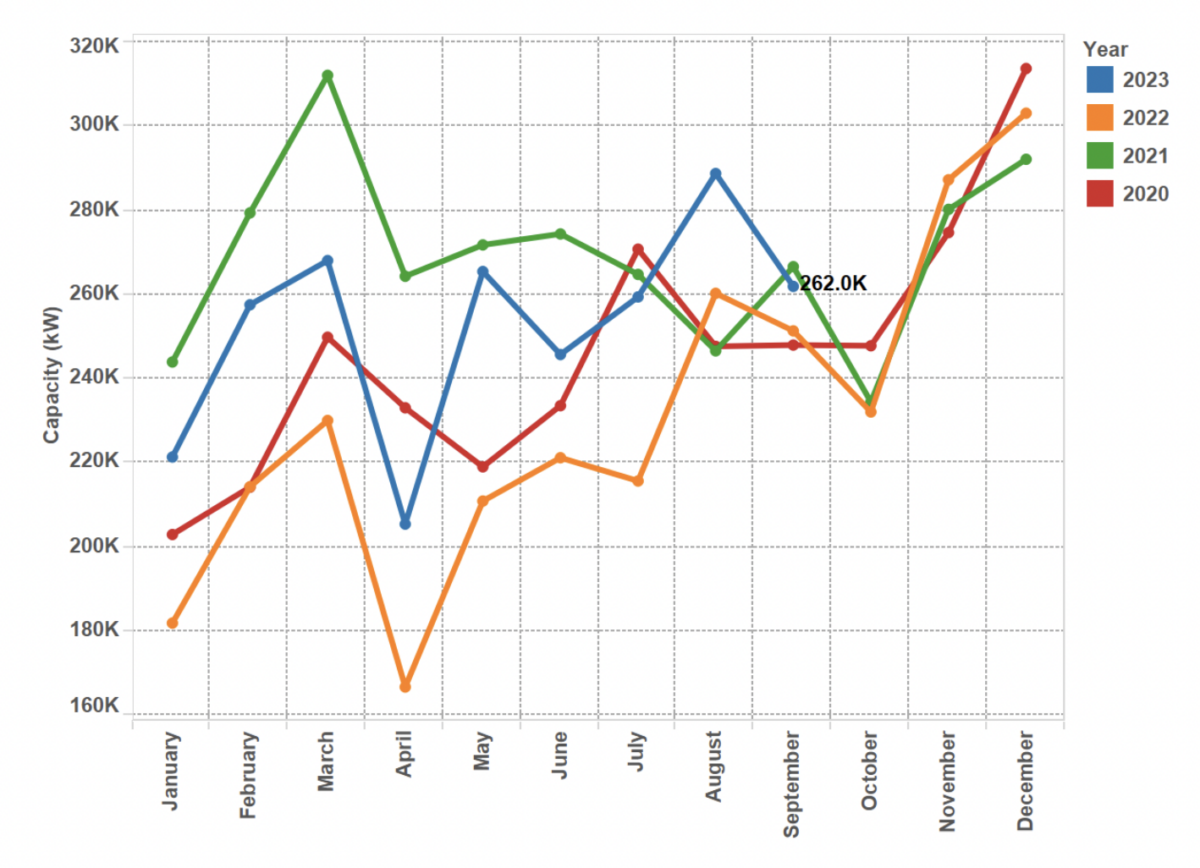While 2023 is still trailing 2021 for small-scale solar installations, the difference is now only 150 MW, or 7%, according to data from Sunwiz. In 2021, the fourth quarter was the most tumultuous three-month period. On the other hand, elevated lead levels and a spike in Google searches suggests that the fourth quarter of this year will contend for the strongest period in 2023.
“I think there’s already a good deal of momentum backed in and that we are going to see elevated levels [of sales],” Warwick Johnston, managing director of Sunwiz, tells pv magazine Australia. “I suspect we are going to have a strong October, so we’re up for a record year.”
Lead volumes this September were up 78% compared to the number of quote requests in September 2021, Sunwiz has found. Many customers are npw turning to Google to find out about installing solar.
“I’m seeing consumer interest levels 10 to 20% up on what they were in the same time of previous year. All this hasn’t yet flowed through to leads proposals and sales,” Johnston said of the spike in Google trends for “solar” and “solar panel.” He said that it's “the highest level it's been … and paybacks [on solar systems] are all improving now, so that bodes well for 2024 as well. My prediction is that we are going to have a strong finish to the year and have a record year for 2023.”
Popular content
The average size of solar systems in Australia is also at record high, with especially strong growth in 10 kW to 15 kW systems. “The reason is because you’ve got commercial doing really, really well. Record year for commercial.”
Falling prices
Another interesting trend is that while Australian solar system prices are now falling after the pandemic hike, this has not translated to customers spending less overall.


This is demonstrated in the above two graphs, with the total dollar customer spend on top and dollars per watt below.
“If you look at the dollar total spend, it’s pretty consistent and flat. So this to me is saying as panels are getting cheaper, people are putting more of them on,” Johnston said.
This content is protected by copyright and may not be reused. If you want to cooperate with us and would like to reuse some of our content, please contact: editors@pv-magazine.com.



By submitting this form you agree to pv magazine using your data for the purposes of publishing your comment.
Your personal data will only be disclosed or otherwise transmitted to third parties for the purposes of spam filtering or if this is necessary for technical maintenance of the website. Any other transfer to third parties will not take place unless this is justified on the basis of applicable data protection regulations or if pv magazine is legally obliged to do so.
You may revoke this consent at any time with effect for the future, in which case your personal data will be deleted immediately. Otherwise, your data will be deleted if pv magazine has processed your request or the purpose of data storage is fulfilled.
Further information on data privacy can be found in our Data Protection Policy.